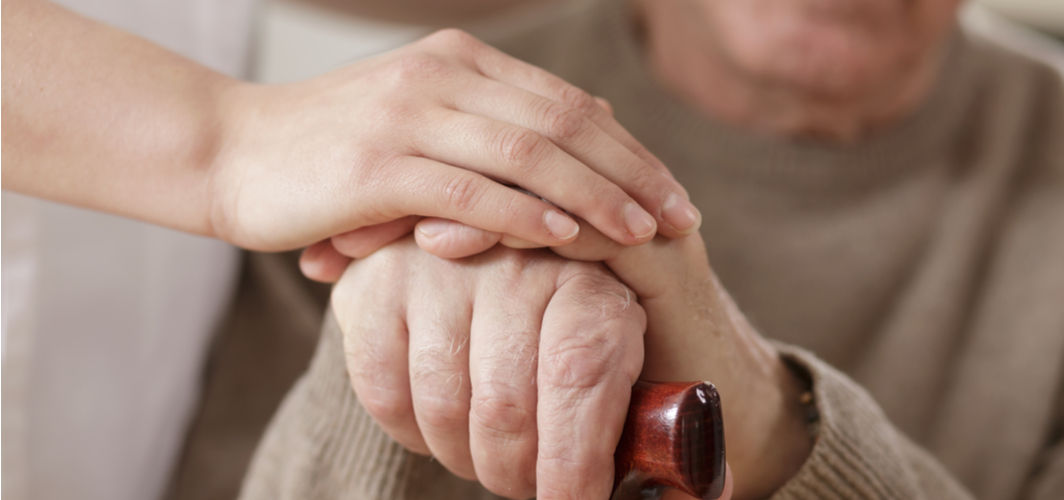General Health
What Is Parkinson’s Disease: Are You At Risk?
4 min read
By Apollo 24|7, Published on - 11 April 2022, Updated on - 18 October 2022
Share this article
0
2 likes

Old age is a rewarding time of life, but it brings some unique challenges too. Parkinson’s disease can be one of those complicated challenges. While expert views differ and are not conclusive on what causes Parkinson’s disease, studies point toward some common factors that may trigger high risk in individuals. Every year April 11th is observed as World Parkinson’s Day to bring awareness, connect people with the disease, and shrink the social stigma around it.
What is Parkinson’s disease (PD)?
Parkinson’s disease is a chronic disorder that can gradually damage the nerve cells of the body, affecting the motor and cognitive functions of an individual. Scientists believe Parkinson's disease occurs when the nerve cells of the brain, which make the happy hormone (dopamine), become impaired or die. Due to the lack of dopamine in the brain, the affected person experiences tremors at rest, stiff muscles, slow movements, and difficulty in balance and coordination. Scientists are still identifying the underlying reason for the death of nerve cells.
Signs & symptoms of Parkinson’s disease
The symptoms of Parkinson's develop gradually and may vary from one person to another due to the diversity of the disorder. Although the disease is not life-threatening, it can trigger various health complications which may then lead to loss of life. Some of the common signs and symptoms include:
- Changed handwriting
- Loss of smell
- Persistent Constipation
- Shaking of hands or legs (tremors)
- Slowness of movement (slow blinking of eyes or taking time to get off a chair)
- A soft or low voice
- Emotionless face
- Dizziness or fainting
- Rigid Muscles
- Unsteady walk, balance and coordination problems
- Involuntary squeezing of muscles (dystonia)
- Stooped posture
The presence of these symptoms does not conclude Parkinson’s disease. Doctors may perform a series of tests to confirm the diagnosis.
What are the different stages of Parkinson’s disease?
Not every person with Parkinson's goes through all symptoms or in the same order at the least. Depending on your genetic make up your symptoms could be mild to severe. Since Parkinson's is a progressive disease, it worsens with time. Medications, treatments, and therapies can only help manage or reduce the intensity of the symptoms but cannot reverse the condition.
The disorder can be segregated into 5-stages, and this is how it progresses:
1. Stage-1(Mild)
- At this stage, symptoms often go ignored or unnoticed as they do not interfere with one’s everyday life.
- One of the most distinctive symptoms of this stage is tremors.
- At this stage, most of the symptoms are generally exclusive to one side of the body (unilateral involvement).
- Treatments and medications can minimise and improve the symptoms.
2. Stage-2 (Mild)
- By this stage, the tremors and other symptoms worsen and are visible on both sides (bilateral involvement) or at the midline of the body.
- In addition, the patient starts showing symptoms like speech abnormality and decreased blinking.
- Daily tasks become more difficult than usual demanding more focus and effort to be completed but can be performed independently.
3. Stage-3 (Moderate)
- At this stage, most of the symptoms remain the same but grow in intensity, such as compromised balance, decreased reflexes, and slower movements, which can cause falls while standing or walking.
- By this stage, Parkinson’s symptoms start affecting one’s daily tasks more intensely.
- Medication and therapy can help decrease and delay the symptoms.
4. Stage-4 (Severe)
- At this stage, the patient's independence is compromised.
- With everyday tasks becoming more consuming and sometimes life challenging, living alone may no longer be possible.
- Walking aids and assistance may be needed.
5. Stage-5 (most Severe)
- At this stage, a patient’s dependency grows on a wheelchair or they may become bed-bound.
- Symptoms like hallucinations, spasms or delusions start to surface and the response to medication reduces.
Can Parkinson’s disease be prevented?
No, currently, Parkinson’s is neither preventable nor curable. Parkinson’s is a progressive disease and is still in the process of being fully understood. However, the medications and therapies are capable of reducing or slowing down its symptoms.
10 facts to know about Parkinson’s disease
- The disorder is not hereditary and very rarely runs in the family.
- Men are 50% more susceptible to developing PD compared to women.
- People in their 60s are at the highest risk for developing PD. Only in 5-10% of cases people in their 50s or less are susceptible to the disorder. The 40s is considered young-onset of Parkinson’s.
- Only 30% of the affected population experiences tremors.
- No two people have the same symptoms.
- Exercising can improve functioning in PD.
- PD patients can suffer from depression and anxiety.
- Dopamine can help manage Parkinson’s effectively.
- Patients can also develop non-motor symptoms of dementia such as low blood pressure, difficulty swallowing, dementia, hallucination, drooling, depression, urinary problems, and skin issues.
- Parkinson’s disease appears randomly and is incurable, but the symptoms can be relieved to a greater extent.
General Health
Leave Comment
Recommended for you

General Health
Top 10 Sources Of Vitamin B12-Rich Foods
Elevate your health with these top 10 vitamin B12-rich foods, essential for optimal nourishment and overall well-being.

General Health
Epithelial Cells in Urine: Normal Range, Causes & Health Risks
Epithelial Cells in Urine may indicate infections or kidney issues. Learn about the normal range, causes, and health implications for better diagnosis.

General Health
Mosquito-Borne Diseases: Know The Difference Between Malaria, Dengue, and Chikungunya
Malaria, dengue, and chikungunya are mosquito-borne diseases common in hot and humid regions. It's important to recognise their differences for proper diagnosis and treatment.
Subscribe
Sign up for our free Health Library Daily Newsletter
Get doctor-approved health tips, news, and more.
Visual Stories

Science-backed Home Remedies for Burns and Blisters
Tap to continue exploring
Recommended for you

General Health
Top 10 Sources Of Vitamin B12-Rich Foods
Elevate your health with these top 10 vitamin B12-rich foods, essential for optimal nourishment and overall well-being.

General Health
Epithelial Cells in Urine: Normal Range, Causes & Health Risks
Epithelial Cells in Urine may indicate infections or kidney issues. Learn about the normal range, causes, and health implications for better diagnosis.

General Health
Mosquito-Borne Diseases: Know The Difference Between Malaria, Dengue, and Chikungunya
Malaria, dengue, and chikungunya are mosquito-borne diseases common in hot and humid regions. It's important to recognise their differences for proper diagnosis and treatment.